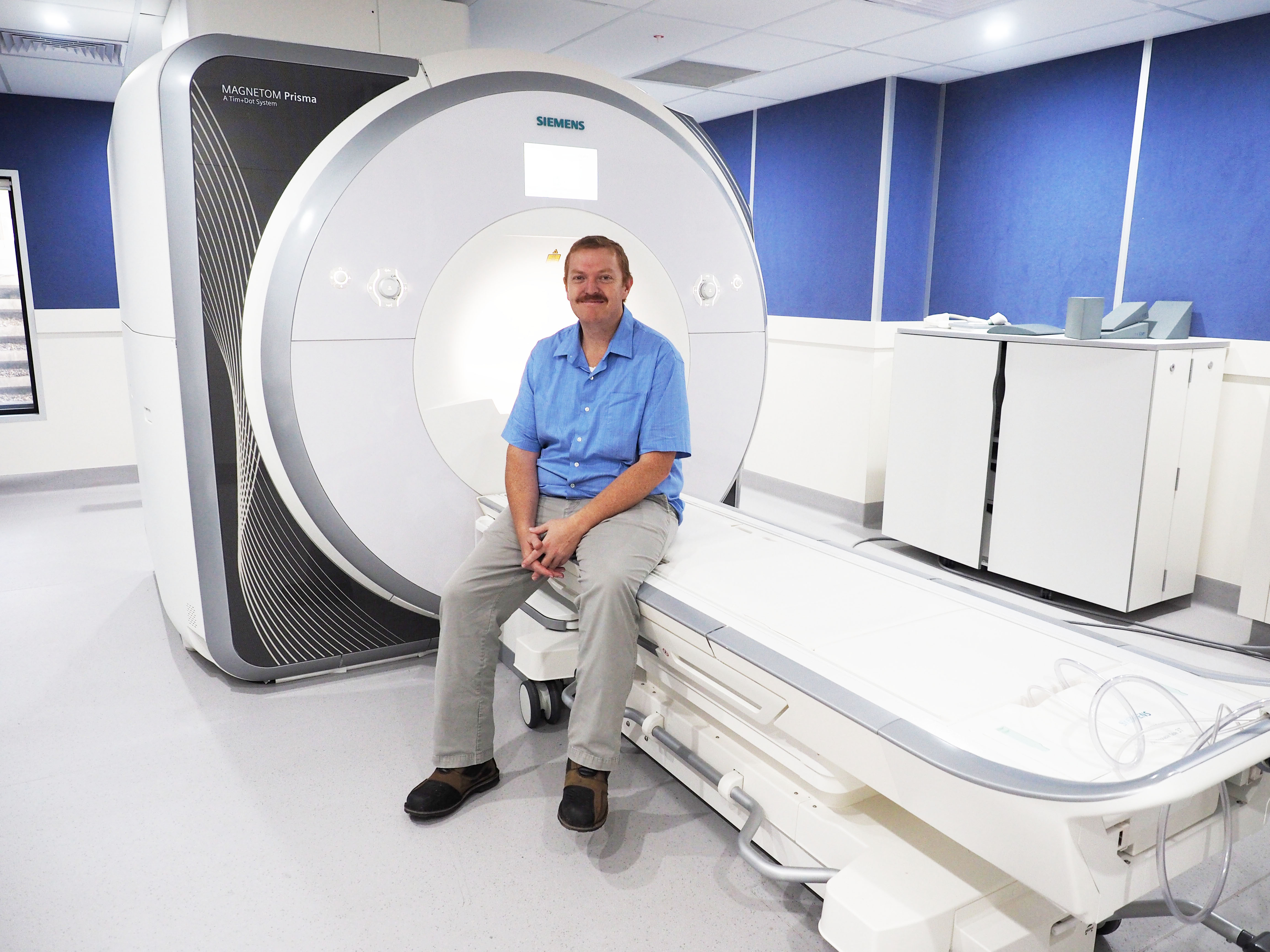Experienced radiographer Nathan Tosh is working to identify and isolate abnormalities in brain chemistry associated with PTSD and blast trauma, to identify early signs of these conditions and improve diagnosis.

Approximately 12 per cent of the Australian population experience Post Traumatic Stress Disorder (PTSD) in their lifetime. Currently, diagnosis of this disorder relies heavily on a subjective psychological assessment, based on symptoms reported by the patient.
To improve diagnosis of this condition, Nathan Tosh has embarked on a
PhD project to identify and isolate abnormalities in the brain chemistry of patients with PTSD.
Using an advanced clinical imaging technology,
2D MRS L-COSY, Nathan is comparing the brain tissue biochemistry of patients diagnosed with PTSD to healthy controls.
The results of this project may help clinicians to identify early warning signs of PTSD, or susceptibility to the condition, to inform options for management and initiate early treatment.
Progress to date
Nathan has observed some key differences in brain biochemistry between patients with PTSD and those without. In particular, patients with PTSD showed increased levels of certain molecules that help communicate messages in the brain.
Nathan’s work has been pivotal in discovering a new set of biochemical changes in the brain that are also associated with PTSD . A peer-reviewed publication is being prepared on these findings and will be published in the near future.
Next, Nathan aims to determine if these changes can be reliably quantified to generate diagnostic classifiers, to assist clinicians with a more objective diagnosis of PTSD.
| Do you have PTSD or would you like to help those who do? Consider taking part in this study - read more. |
Early detection of blast trauma in front-line defenders
Nathan is also using 2D MRS L-COSY technology to study the effect of blast trauma on the brain of front-line defenders, which can be sustained after exposure to detonating explosives in the field.
Blast trauma is observed in a proportion of military personnel returning from deployment, and the after-effects can include physical (somatic), behavioural, psychological and cognitive symptoms.
As diagnosis of blast trauma relies heavily upon patient-reported surveys of current symptoms, there is currently a lack of objective means to diagnose this condition, and to determine the extent of damage that has been sustained.
The aim of this project is to develop a method to objectively identify and quantify blast trauma, to help front-line defenders manage their risk of irreversible trauma, and inform decisions about whether to proceed with further deployment.
The project involves comparing 2D MRS L-COSY results of patients exposed to different types of blasts, to determine what changes to brain chemistry are associated with certain types of blast trauma, and then determining whether these changes can be quantified to reflect the extent of brain trauma.
Progress to date
So far, Nathan has assessed the effects of blast trauma on several patients using 2D MRS L-COSY. While these results are preliminary, they indicate that 2D MRS L-COSY can be used to indicate the severity of the blast injury. Interestingly, his results so far indicate that patients with blast trauma have results that look more akin to those in patients with PTSD than those with physical head trauma from sport.
__________________________________________________________________________________________________________________
Project supervisors: Nathan’s PhD project is supervised by Professor Carolyn Mountford and Professor Graham Galloway at TRI, and Professor Ross Young at Queensland University of Technology (QUT).
Collaborators: Nathan’s project involves an international collaboration with the United States Department of Defense, an interstate collaboration with the Hunter Medical Research Institute, and local collaborations with Princess Alexandra Hospital (PAH) and the Royal Brisbane and Women’s Hospital (RBWH).
Picture: Nathan Tosh at the Siemens 3Tesla Prisma MRI.








